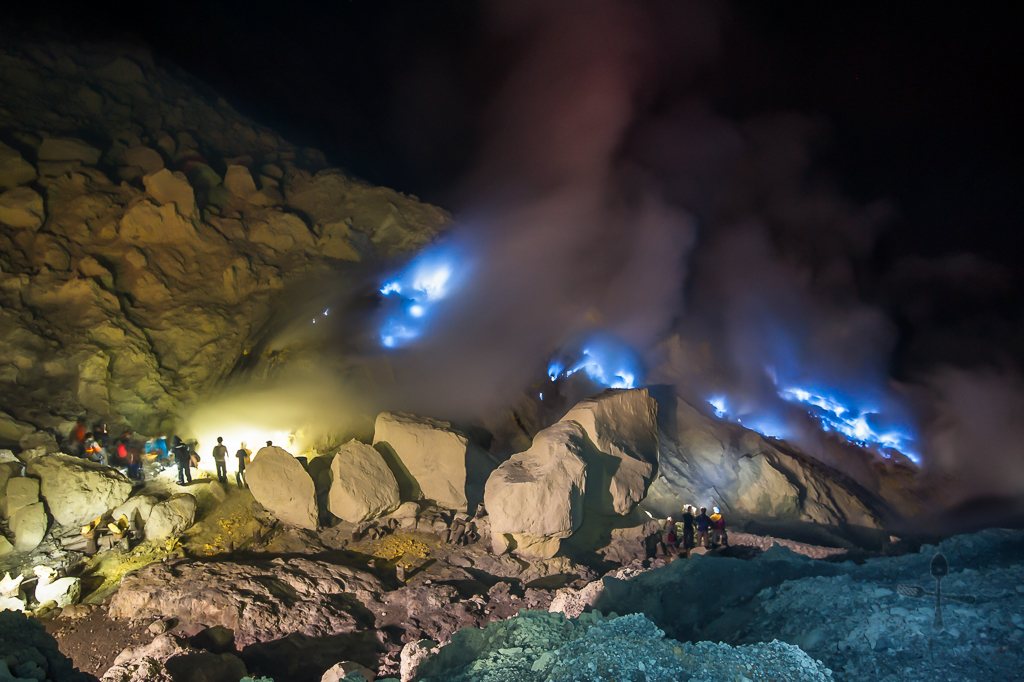
See our itinerary and past posts for East Java here.
The Ijen volcano, located in East Java, contains the world’s largest acidic volcanic crater lake, and is an active site for sulphur mining. It was our last hike before we head back home to Singapore.
On the night of the climb, we had an early dinner and went to bed at around 8 p.m. The alarm rang 5 hours later and we struggled to get out of our beds, did a quick wash-up and head into the car so that our driver can fetch us to the entrance of the hike. We had a local guide who led the way – it was a steep 2-hour upward climb to the rim of the crater followed by a 30-minute downward and rocky climb to the crater.
Sulphur burns with a blue flame, and this phenomenon is best observed in the dark. Once you know the science behind it, it may not be as magical, but still a spectacular sight watching the flames danced in the dark.
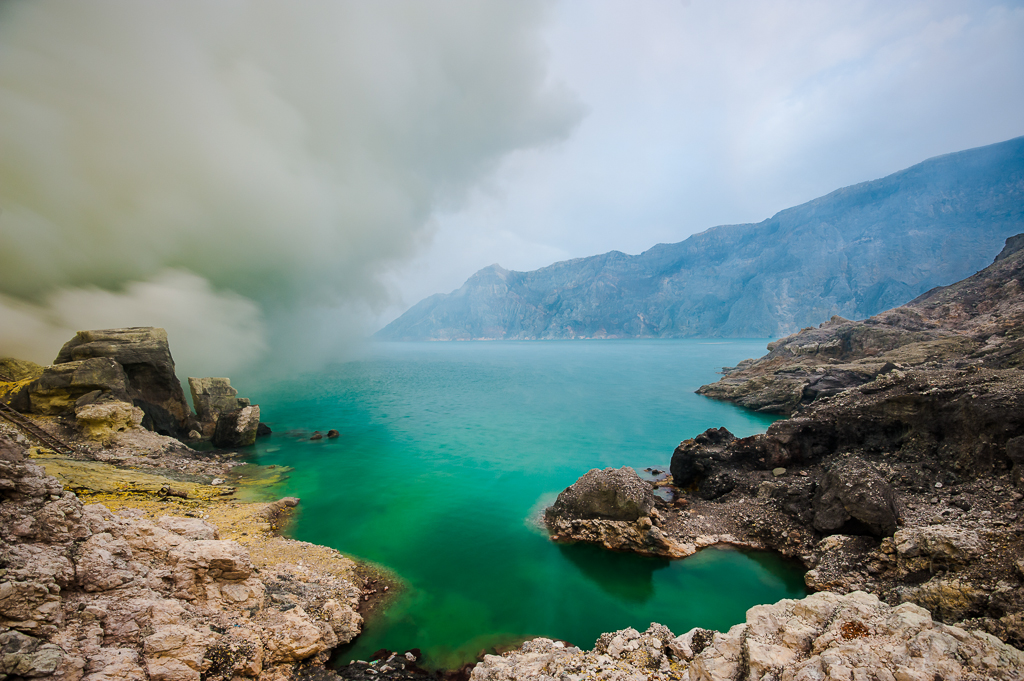
We stayed there until the sun rose, so that we can see Kawah Ijen – the world’s largest acidic volcanic crater lake. It was so clear, so inviting, but so deadly.
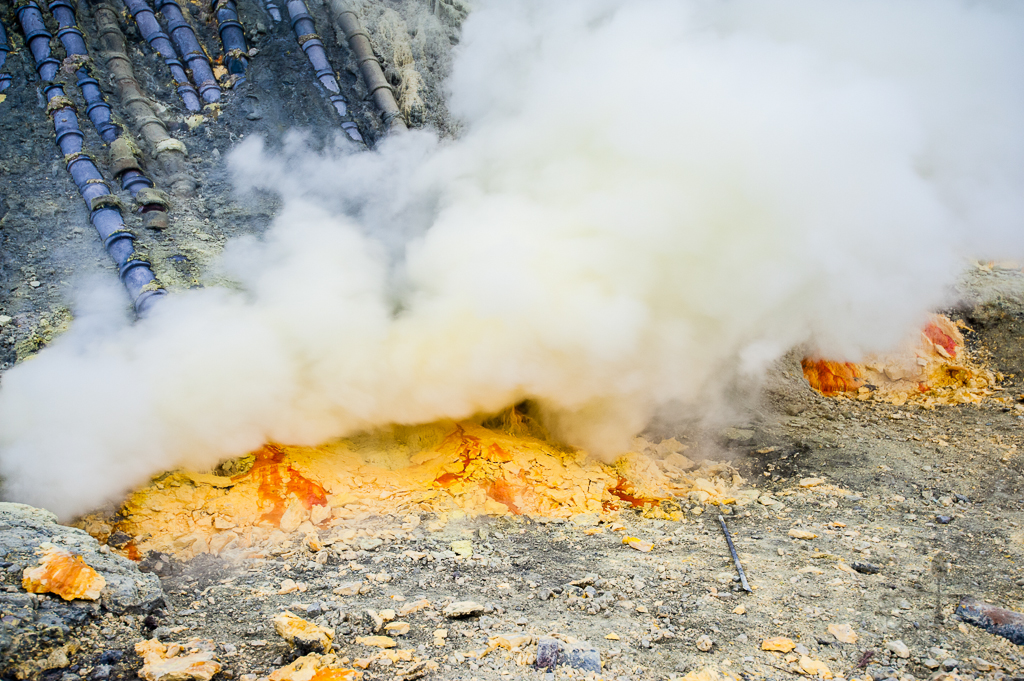
The suphur gases are channeled through pipes, which condenses into dark red molten sulphur. The molten sulphur then pools at the end of the pipes, where it cools and solidifies into a bright yellow mass.
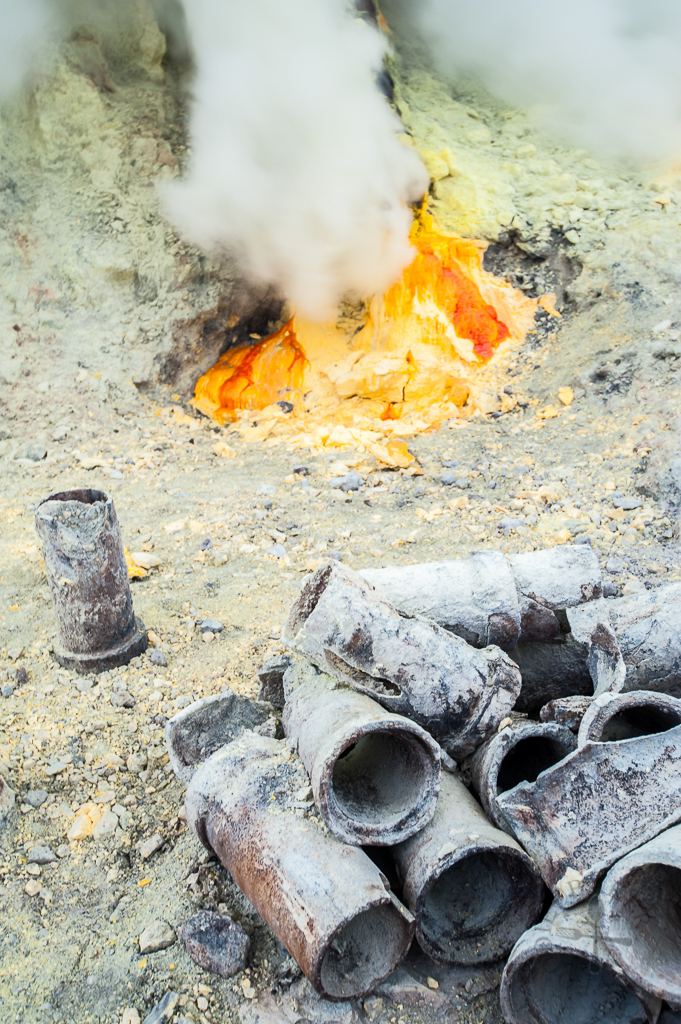
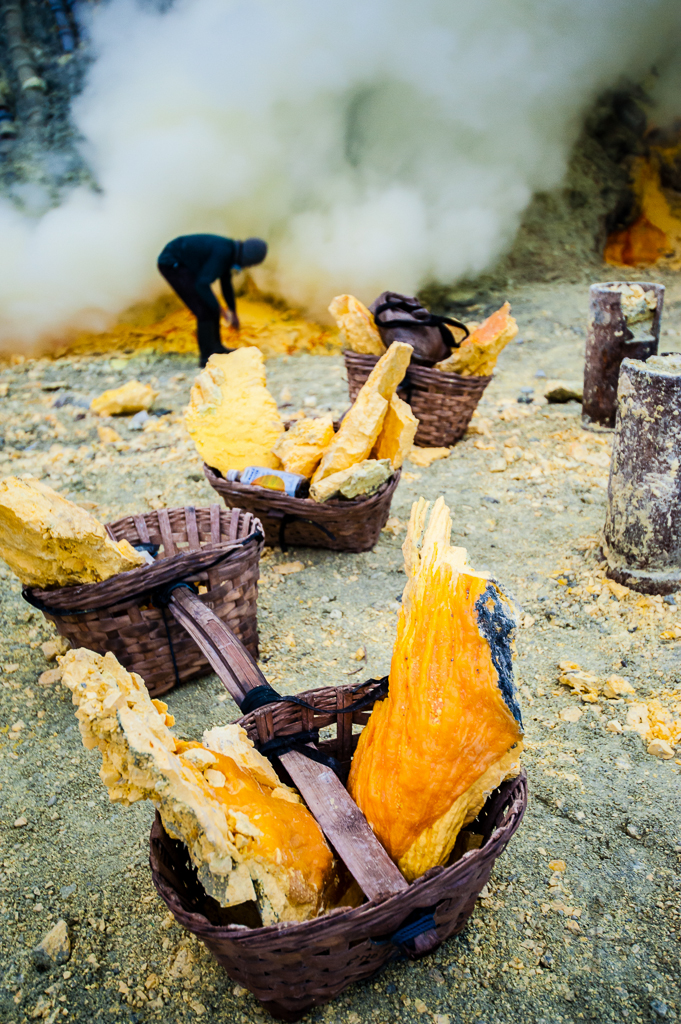
Despite the toxic fumes, the sulpher miners work with minimal protection, some wore masks made with a bandana, while most didn’t even bother. The sulphur miners break the solidified sulphur into chunks, load them into their baskets and carried them back down the volcano.
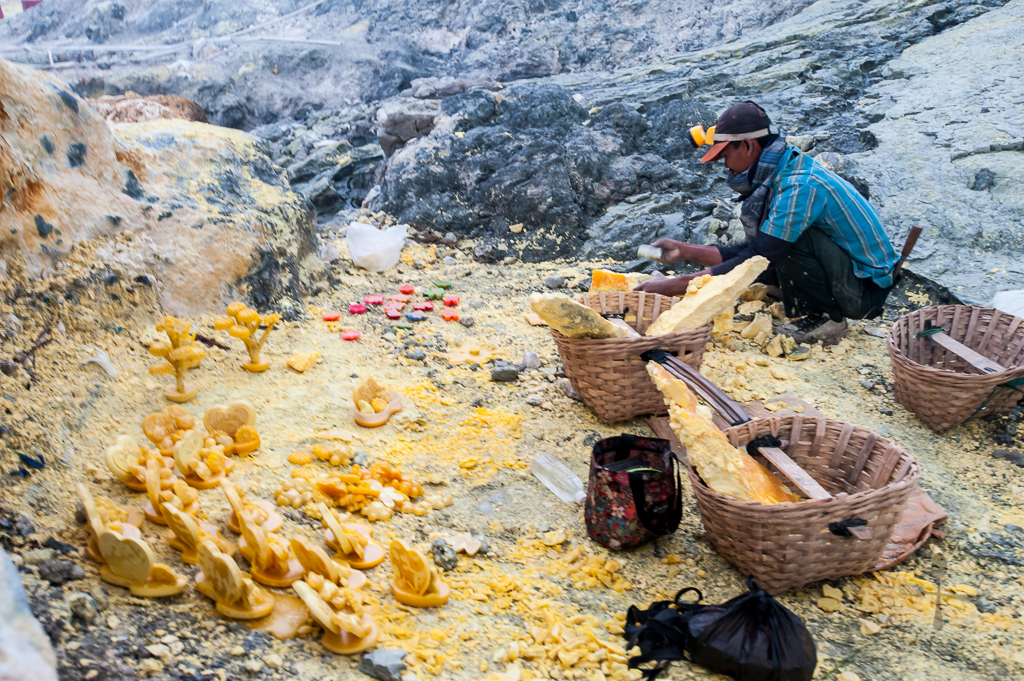
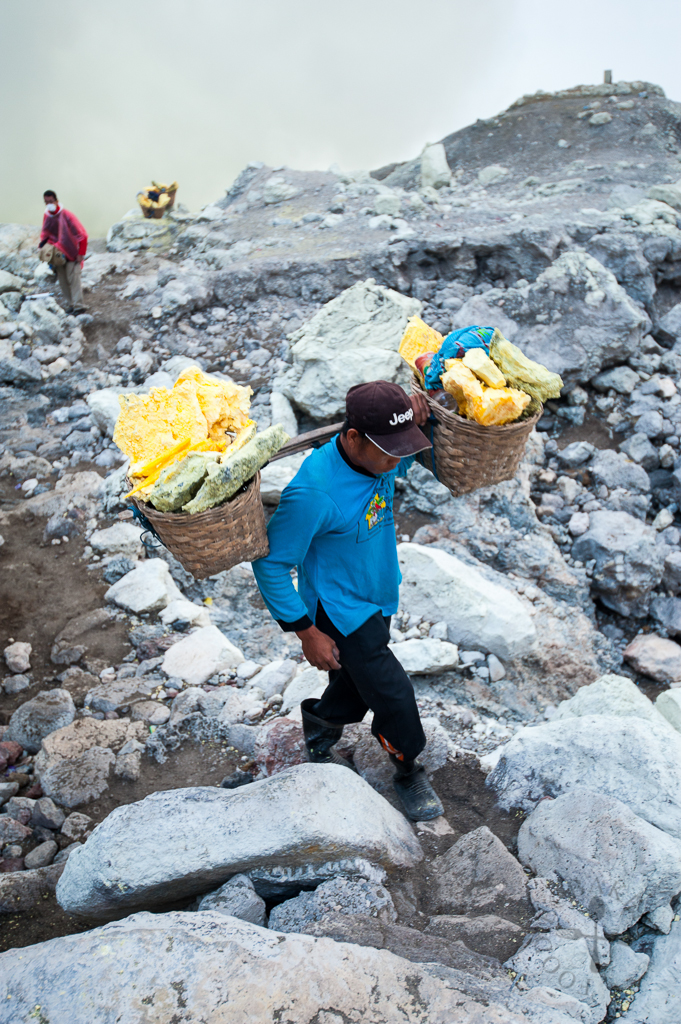
Is there a shortcut for them to head back down? No, we are all sharing the same path up and down the volcano – except that they have a load of 70 to 100 kg on their backs on their way back. They have to tread carefully among the rocks, making sure that they don’t trip/fall or drop their load.
Each trip will earn them about USD 7, and most of the miners will do this two to three times each day.
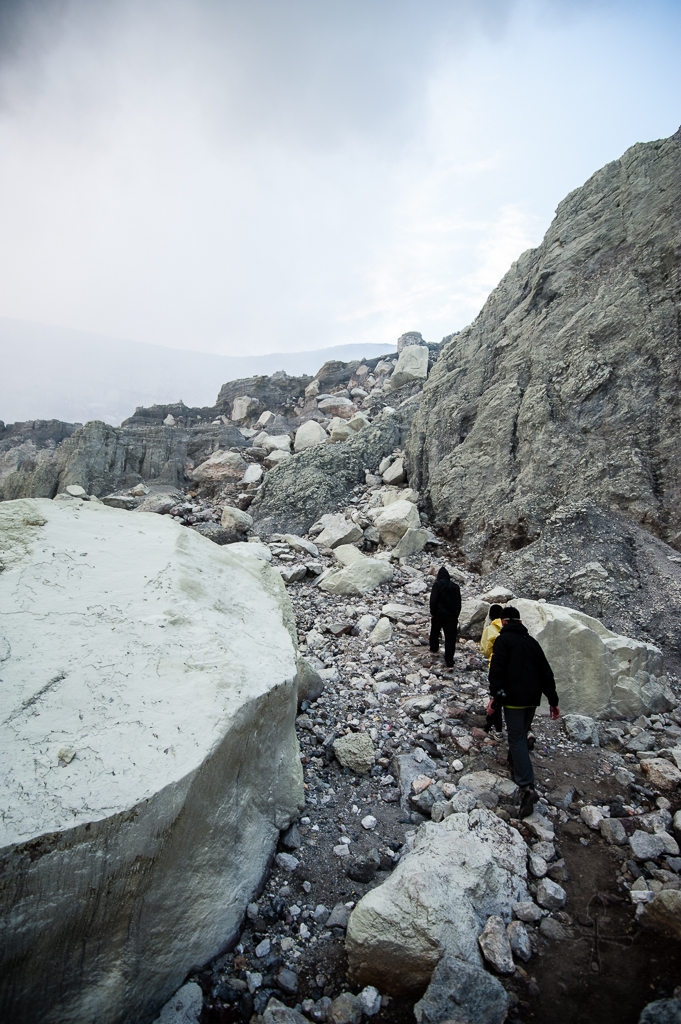
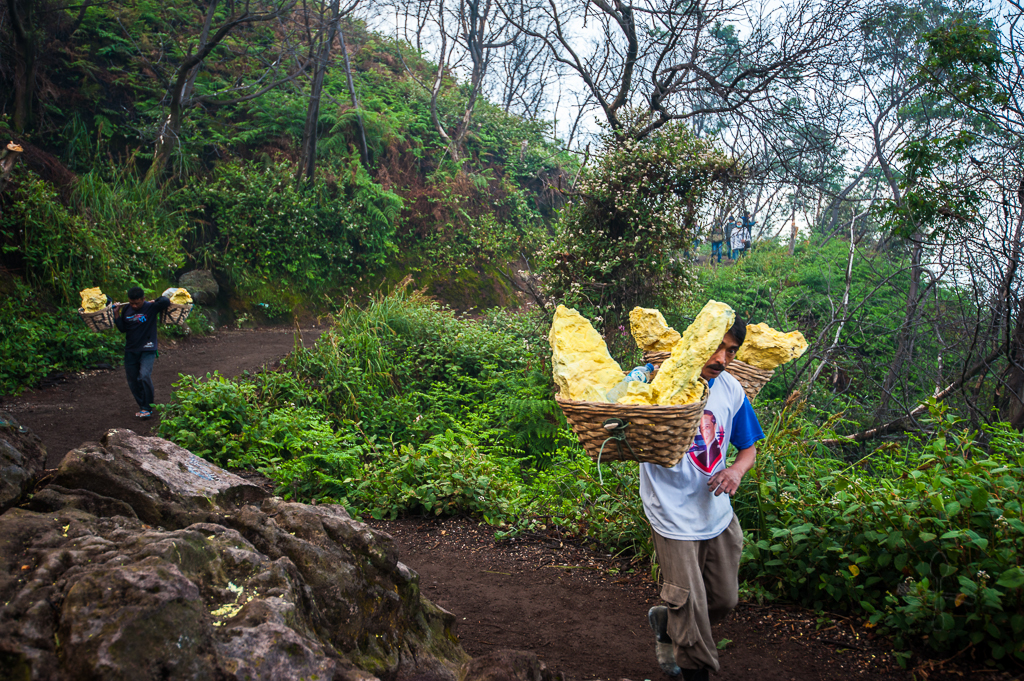
When conversing with our guide, he told us that many of them started doing this when they are about 20 years old, and they will do it for as long as they can, until the detrimental effects of the toxic fumes take a toll on them. Why do they do this, even though it’s such a dangerous and hazardous job? Because it was their only way to earn a livelihood.
SavoringTime IntheKitchen says
What beautiful views! So sad that the lake and the sulfur are so toxic and I can’t even imagine earning a living carrying those sulfur rocks down the mountain.
Jasline N. says
Thanks Susan! I know, it was really heartbreaking to learn about their work, it’s really not easy!
Raymund says
Wow those pictures are amazing!
Jasline N. says
Thanks Raymund!
AppetiteDeluxe says
wow your pictures are amazing and I’m jealous I haven’t visited there
Jasline N. says
Thank you! I wish you have a chance to, the place is amazing!
KCole's Creative Corner says
Great pictures!
Jasline N. says
Thank you!
May Law says
你的照片拍得真美, 让我边看边赞呢!
Jasline N. says
谢谢你啦 May!